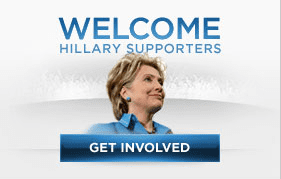Obama does a 360
The interweb is packed full of congratulations and celebrations over Barack Obama’s victory and it seems a pretty good time to have a look at some of the tools he used to win and see what lessons there are to learn for fundraising in the UK.
There are tons of them. Probably enough to fill a book, but there are a few that are worth noting and keeping an eye out for more information on now.
As we know, it didn’t take long for him to go from being a relative unknown to a household name and finally, president. He did it by using a combination of grass roots networking and traditional media.
And through these he has raised tremendous sums of money – well over $650 million. Final figures still need to be counted but it seems likely that he has surpassed what all candidates from both major parties collected in private donations in 2004.
In September, he generated a record-breaking $150 million (up from $66 million in August). In a video message sent to supporters, David Plouffe, the Obama campaign manager, said that 632,000 new donors had been recruited in that month alone. This has brought the campaign’s total to 3.1 million. The average contribution was described as being less than $100.
But he wasn’t deserted by big money either. The big cheques, which were received by his joint money-raising committee with the Democratic National Committee totaled $69 million in the same month.
Behind these figures is a rather sophisticated database. By using a combination of giving history, publicly available data like census reports and voter registration along with geo-demographics – and perhaps most importantly – information that supporters are volunteering, Obama’s team are able to slice up their file in a whole host of ways that is really quite exciting. Put simply, if you have (or are likely to have) young children, you’d receive emails about education policy rather than taxes.
 But it is the volunteered information that I’d like to focus on. The approach to Hillary supporters is a great example of this. Following the fight for nomination, Hillary supporters had to be won over and that meant Obama’s team had to know who they were and treat them in a way that was appropriate to them. So what did they do? Apart from using grass roots knowledge, one approach was a simple welcome button on Obama’s home page. When you clicked it, it flagged you up as a Hillary supporter, when you invited your friends to join via the site, it indicated they might be a Hillary supporter too. It also gave you an opportunity to see what Obama was talking about on the policies that concerned you. A few clicks more and you are further refining your definition –by life stage, ethnic background, religion, state, economic position. And at every stage you are being addressed in the way you choose and finding out about the issues that are likely to concern you.
But it is the volunteered information that I’d like to focus on. The approach to Hillary supporters is a great example of this. Following the fight for nomination, Hillary supporters had to be won over and that meant Obama’s team had to know who they were and treat them in a way that was appropriate to them. So what did they do? Apart from using grass roots knowledge, one approach was a simple welcome button on Obama’s home page. When you clicked it, it flagged you up as a Hillary supporter, when you invited your friends to join via the site, it indicated they might be a Hillary supporter too. It also gave you an opportunity to see what Obama was talking about on the policies that concerned you. A few clicks more and you are further refining your definition –by life stage, ethnic background, religion, state, economic position. And at every stage you are being addressed in the way you choose and finding out about the issues that are likely to concern you.
It isn’t to difficult to see how this approach might pay dividends in our own data collection process or in improving our understanding of donor needs.
The supporter is central to the website and, by extension, to the campaign. The central messages of yes, we can and because it’s about you are simple but immensely powerful. We talk about ultra-personalising our packs by talking about what people have given to in the past. We remind people of when they gave and how often they give. But we have only scratched the surface of what we can do if we really decide to put donor needs at the centre of our fundraising strategy.
But supporters weren’t just volunteering information about who they were. They were also sharing data on how they interacted with the campaign team.
For example, If you open your emails at particular times, the system will notice the pattern and start sending them at that time of day – that way, your email will be at the top of the inbox.
"The marginal benefit of sending some people an email at 2 o'clock vs. 3 o'clock vs. 4 o'clock might not make sense [at first]," said Michael Bassik, a Democratic consultant with MSHC Partners, the firm that did John Kerry's online advertising in 2004. "But once you start getting an e-mail list that's 3 million, 4 million, or 10 million people, increasing the returns for a fundraising e-mail by 5 or 10 percent means additional returns of tens or hundreds of thousands of dollars."
It’s this approach to online marketing that makes Obama’s approach so effective. Howard Dean in 2004 spent a massive amount of money on online marketing and built a huge email list, but they failed to really integrate everything and let too much information go to waste.
As Zephyr Teachout, who ran Dean’s online organising in 2004 admits:
"It's not an innovative campaign, but it's an extraordinarily professional one…They've taken all our stupid ideas and made them smart."
You can learn a few other things about the website here.
But the drive for support didin’t just stop there. I had a text from an mAmerican friend whilst he was queuing up to vote before going to work:
Going to be late for work…really late…line has never been more than 5 minute wait. Today looks like at least an hour or more just to get to the front door.
A few minutes later it was followed by another one:
Most of the faces are young and Afro-American.
18 to 34 year old men are traditionally a very hard group to communicate with. But Obama’s team put billboards up in some very interesting places. In places where they would be noticed – in football, basketball and hockey stadia and also on streets where young men race cars – in swing states like Florida, Colorado and Ohio.
These sites weren’t real, but were found on the online version of video games like Burnout Paradise, NASCAR 09, NHL 09 and NBA Live 08 on the Xbox360 and Playstation 3. Over the last month, billboards have been seen in places where political ads have never run before. I’m not sure if they worked. The only thing I do know is that McCain didn’t seem to be buying any.
Update: These fake in-game ads for the Obama campaign are worth a look.
Tags In
The Essentials

Crack the Code to Regular Giving: Insights, Strategies, and a Special Giveaway!

‘Tis Halloween. Keep to the light and beware the Four Fundraisers of the Apocalypse!

Why do people give? The Donor Participation Project with Louis Diez.

A guide to fundraising on the back of a postcard

What does the latest research tell us about the state of fundraising?








